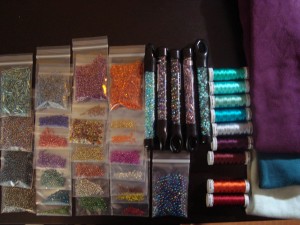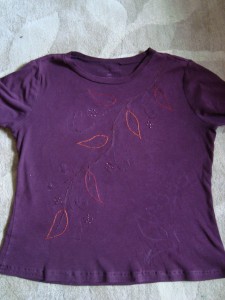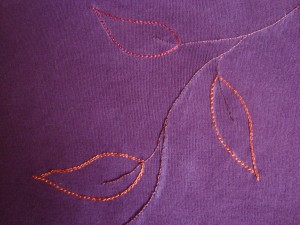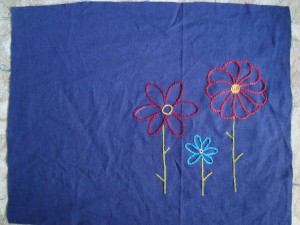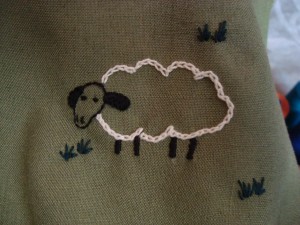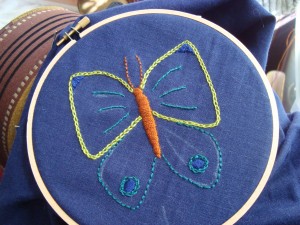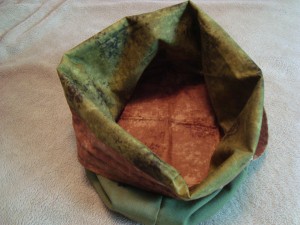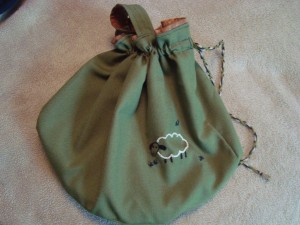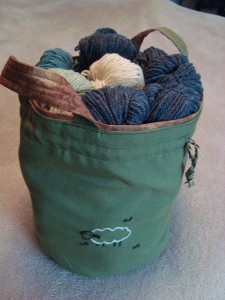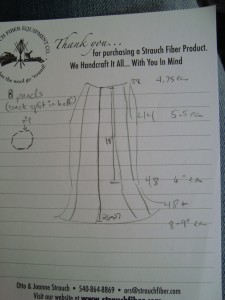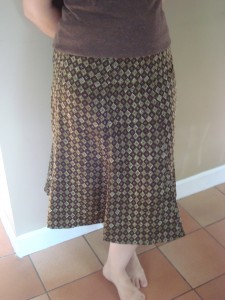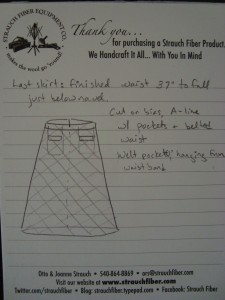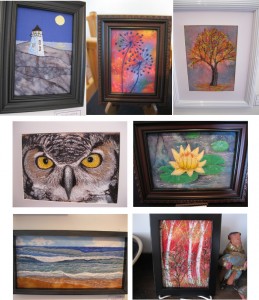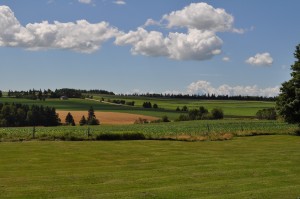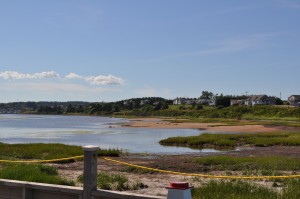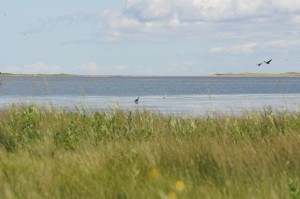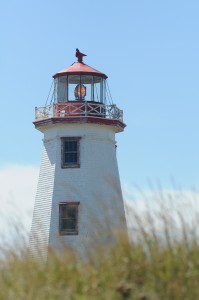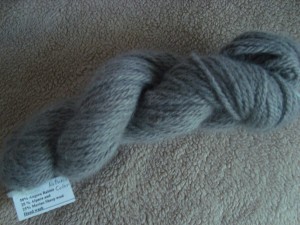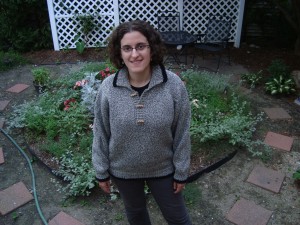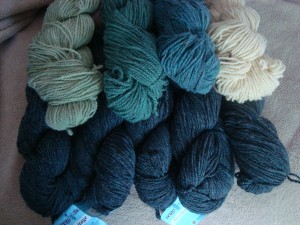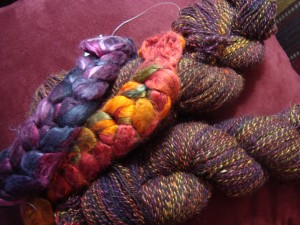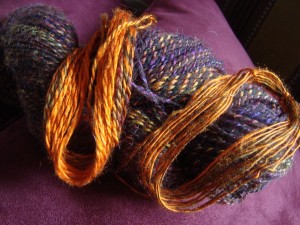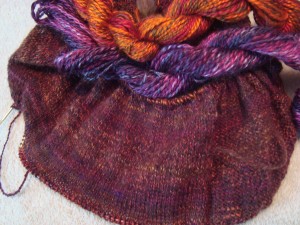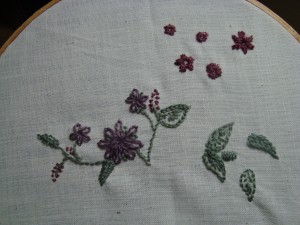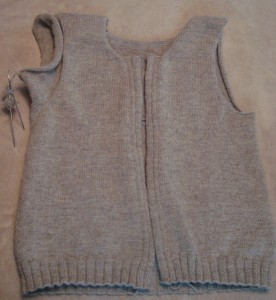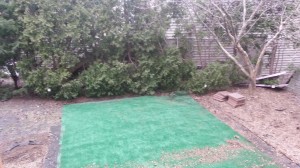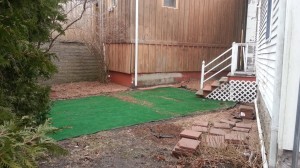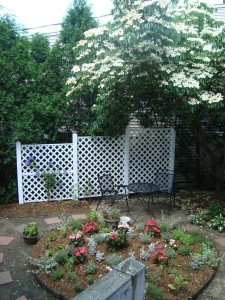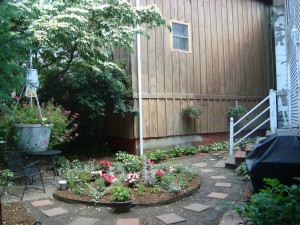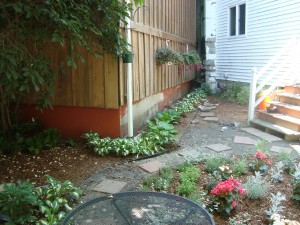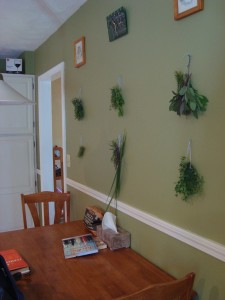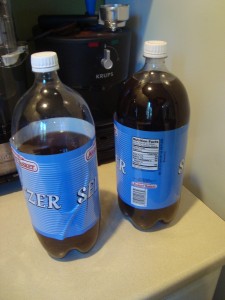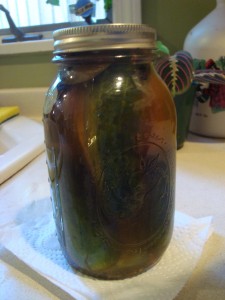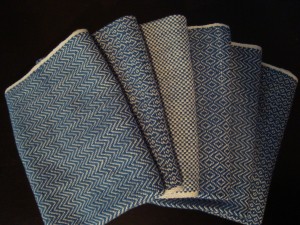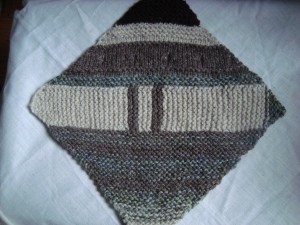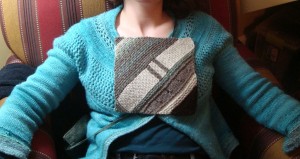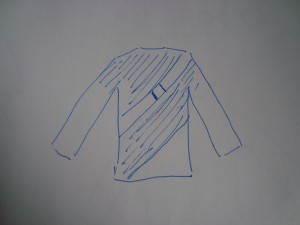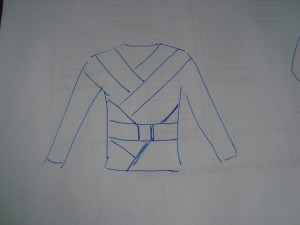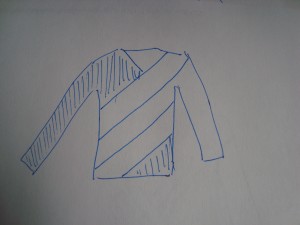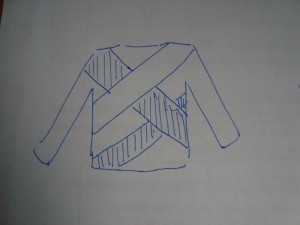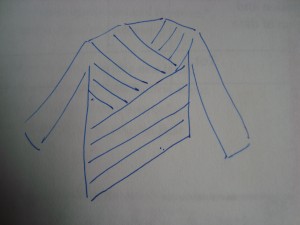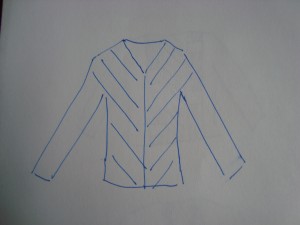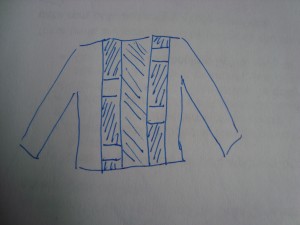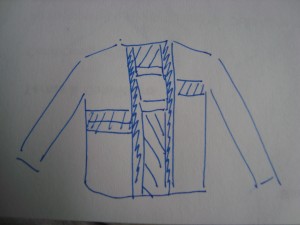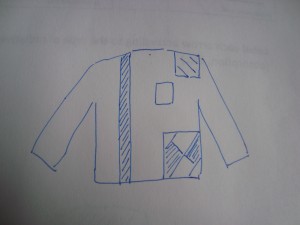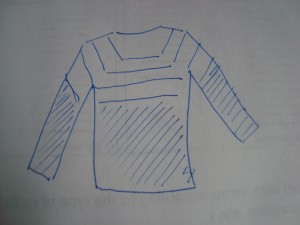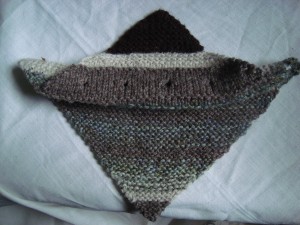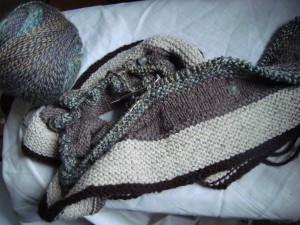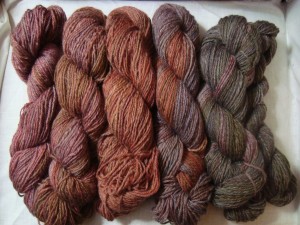Just after I got back from PEI, Branden and I hopped on a plane for another trip, this time to Seattle. I was meeting up with some online fiber friends (Twinset Ellen and Jan and Jocelyn among them) for a 4-day workshop with Susanna Hansson on Bohus knitting.
I’ve never tried Bohus before, though I have long admired the subtle color blending that characterizes the sweaters. In addition to knitting at my finest-ever gauge (9.5 sts to the inch, on 000 needles – whee!), it was fun to get acquainted with the technique. A few interesting things that I learned:
1) Purl stitches add texture and can enhance blending of colors in a colorwork pattern. They seem to be used to feather the edges between two color regions in the Bohus knitting designs, as well as to add dimension. Having those little purl bumps showing kind of blurs the edges of the designs, making them softer-looking.
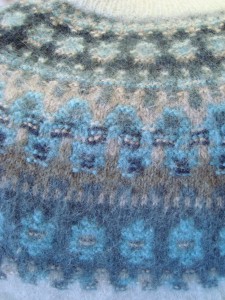
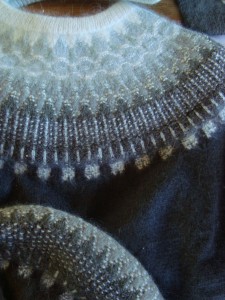

2) Low-contrast color selections make beautiful gradient effects in colorwork knitting. In fairisle and other color knitting techniques, the focus is usually on high contrast color and value combinations. In the Bohus knitting, you’re often working with 5 or more colors, and several of them can be hard to tell apart without very good lighting. On the last day, Susanna showed us her entire collection of Bohus sweaters, destined someday to become a museum exhibit about the Bohus tradition. It was great to see the sweaters in person, and very interesting to see how such subtly different colors can lend depth to the colorwork. How many colors can you see?
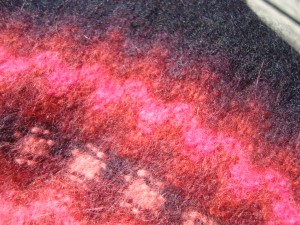
I see a very bright pink, a bright red, a maroon, and a purple, all fading into black in that last stripe. Elsewhere in the design, there is a pale orange, and a pale pink, and possibly a few other colors.
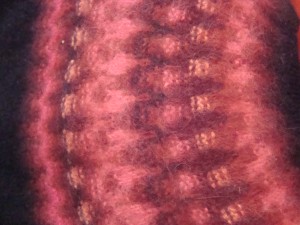
The end result is a colorband that is simply luminous, and almost impossible for the camera to capture.
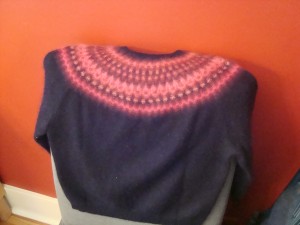
This is one of my favorites, even though I’m not usually much of a pink person. This is another:

Again, it’s color band is a combination of lots of closely related colors. I see a light and a dark green, a very pale green, at least one light blue, a pale and a dark turquoise, and a navy/black, and I think I’m probably missing a few.
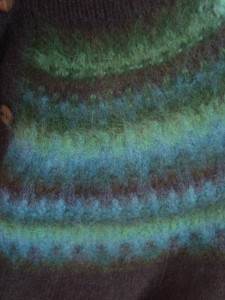
Studying how the different colors and values work together was my favorite part of the class (probably no surprise there).
3) Bohus knitting generally has several different design elements, often with a different number of stitches in a pattern repeat. They don’t bother to line them up with each other; motif 1 is not necessarily in register with motif 2 or any other motif in the sweater. Again, very different than fairisle, and I’m taking that as permission from now on. Perhaps it’s because the stitch patterns are so small, but I didn’t find that the lack of symmetry was even noticeable, and things like that usually jump out at me.
Another benefit of seeing the sweaters in person was that we got to feel the yarn. Both the wool and the angora blend are wonderfully soft, but what really sold me on them was seeing how little pilling and obvious wear there has been after decades of use. I’m sure that the sweaters have been cleaned up with a pill shaver from time to time, but there was very little of the unsightly wear that you often get with a fuzzy yarn. These yarns seem to truly bloom, not shed.
Unfortunately, I think that the only way to get the yarn (or the Bohus charts) is to order a sweater kit. Being more of an innovator than a conservationist, I would like to play with the yarn in its own right, and perhaps riff off of the Bohus design, or possibly do something completely different with the same materials (the yarn is wonderful). Susanna is of the opinion that these designs cannot be improved, and that reproduction is the only answer, but I’m not so sure. These designs are definitely beautiful, and I do like them just as they are, but I think that there is also a world of possibility out there that the Bohus designers never got to explore. No art is ever complete; time, fashion, and the mood of the moment send us down some paths while others are left behind. To my mind, there is always more to explore. The difference between a living tradition and a museum collection is the sense that more is possible, that there is more to be discovered. I would love to spend some time dissecting the why’s and wherefores of how these designs work, and then play with figuring out how we might use these same tools in the future. Perhaps that work would not be true Bohus, but it would be knit in the Bohus tradition, which seems like a good thing to me.
In addition to our Bohus adventure, we spent some time on Bainbridge island where we visited Churchmouse yarns and I resisted some beautiful mohair yarn. I did pick up some lovely wool blend fabric while we were on the island, though.

I’ve been feeling the call to dabble in sewing again lately, and this really wanted to be a skirt. It’s a warm up for my long-term goal of sewing with handwoven fabrics, and I’m looking forward to doing some garment sewing again.
We also stopped by Earthues in Ballard, where I bought a healthy collection of natural dye extracts and dyeing assists for future experiments.
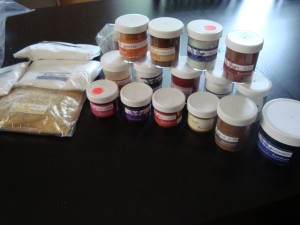
No definite plans for those yet, but they should turn into something fun soon.
After the knitting class, Branden and I took off for a few days of quiet time on Lopez island. The cabin we’d reserved turned out to be something of a disaster, so we changed plans and wandered around Whidbey for a few days instead, and had a great time. On the way back into Seattle, we stopped in at my two favorite knitting stores (Fiber Gallery and Weaving Works), and I picked up a couple of sets of needles to try out. As I go to smaller and smaller needles, I’ve been having some problems with my addi lace needles bending, and I’m wondering if carbon fiber might stand up to the abuse a bit better. I’ve never tried square needles, so I picked up some of those, too, just for fun.
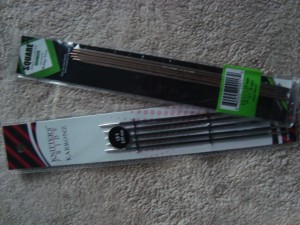
And now, here we are back home again. This week will be a chance to catch up on some things around the house, and then next week the school year starts up again. I can’t believe that summer is over already; it feels like it just started! It was fun to get some travel and some fiber time in there, though.
